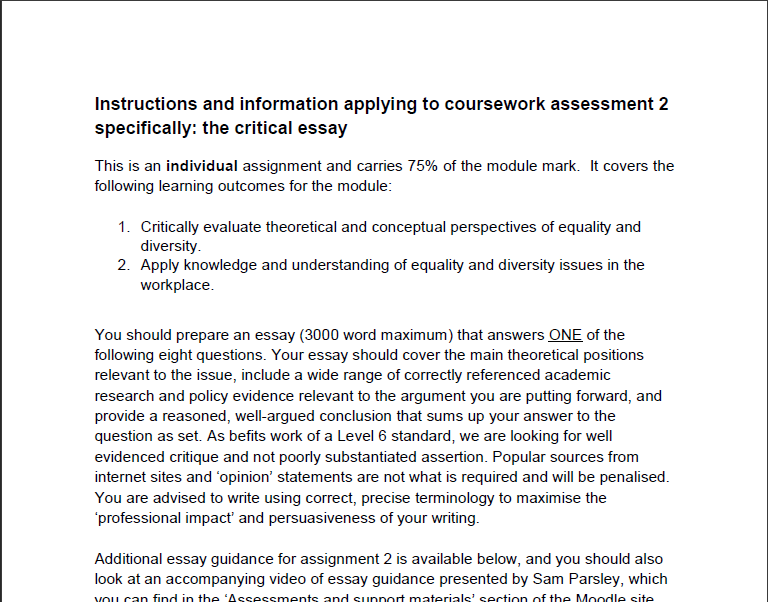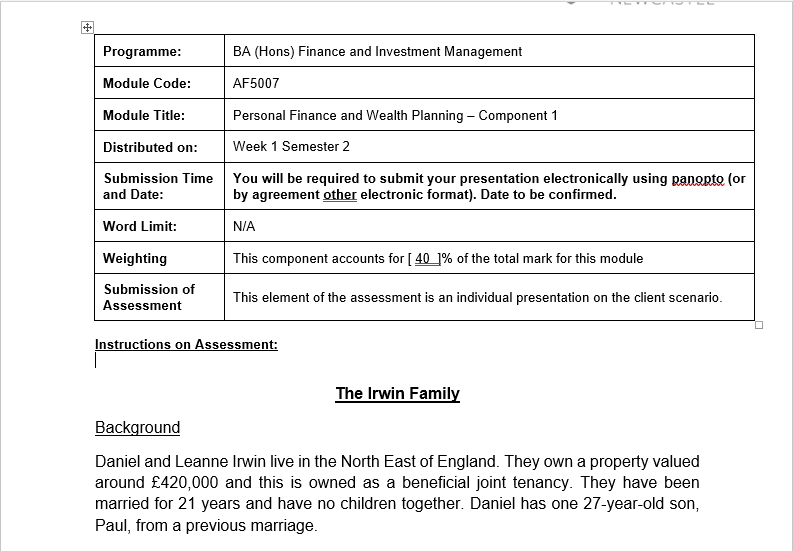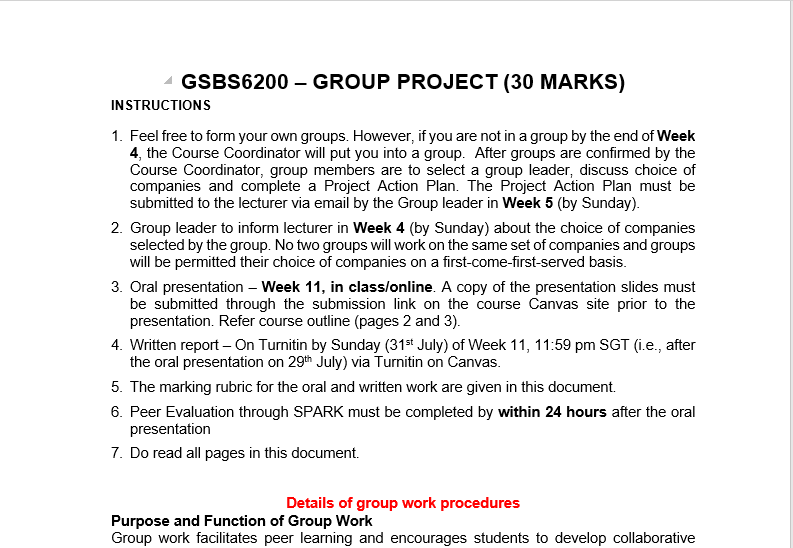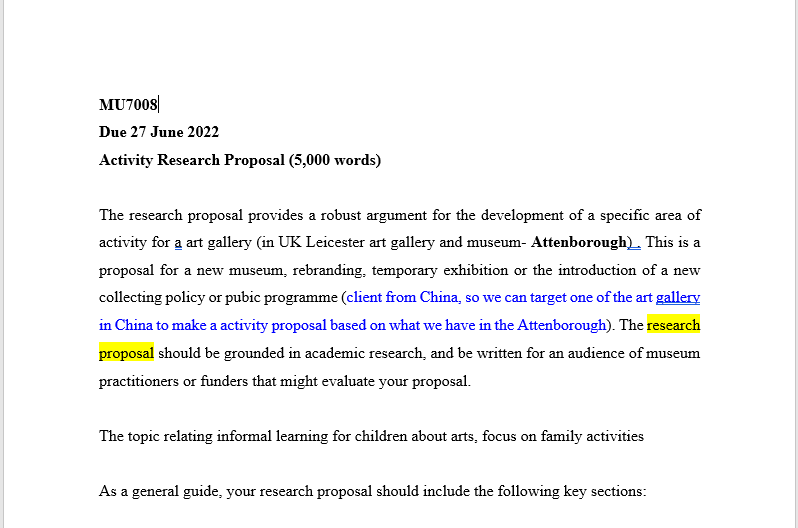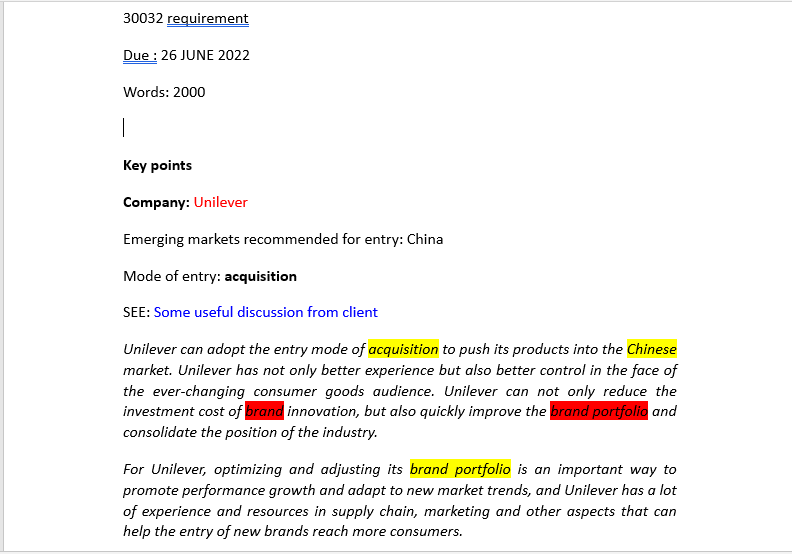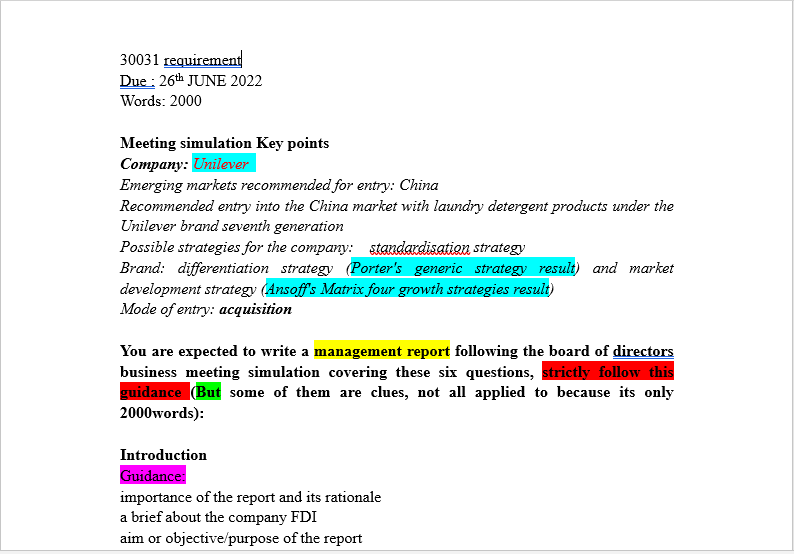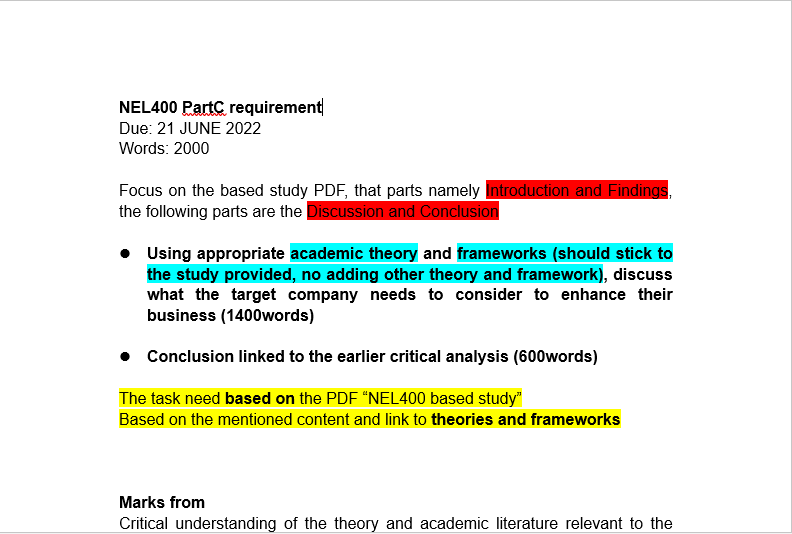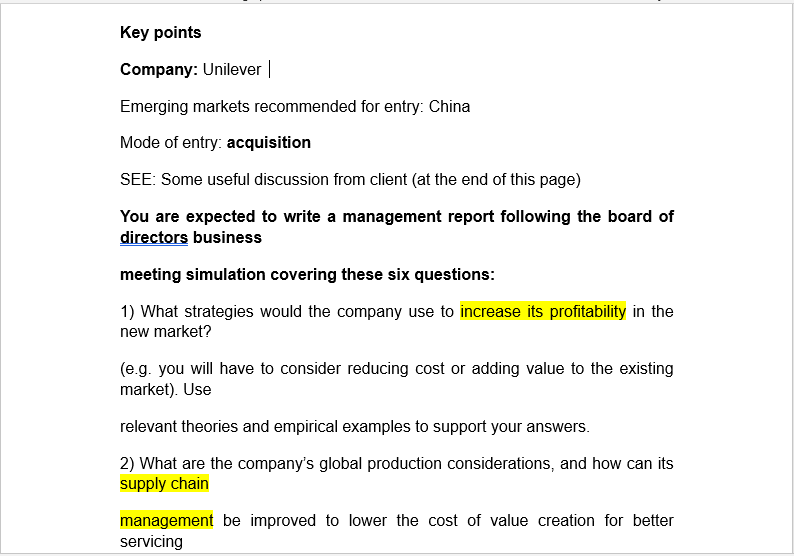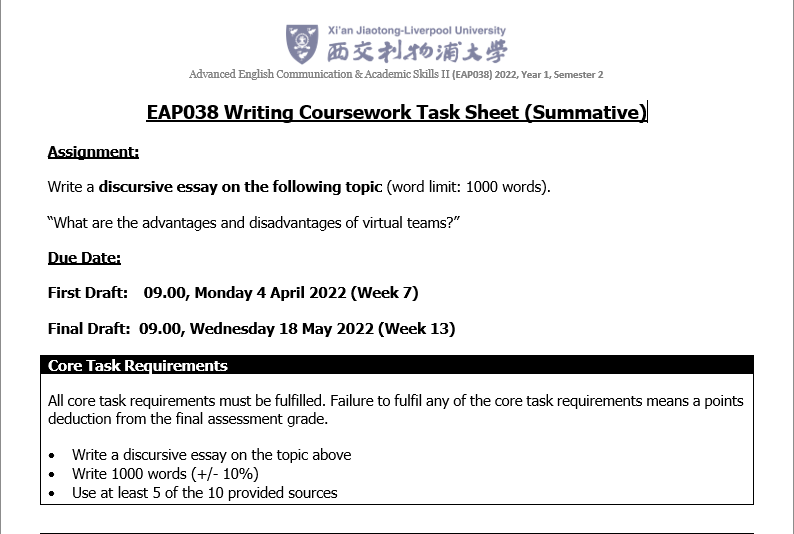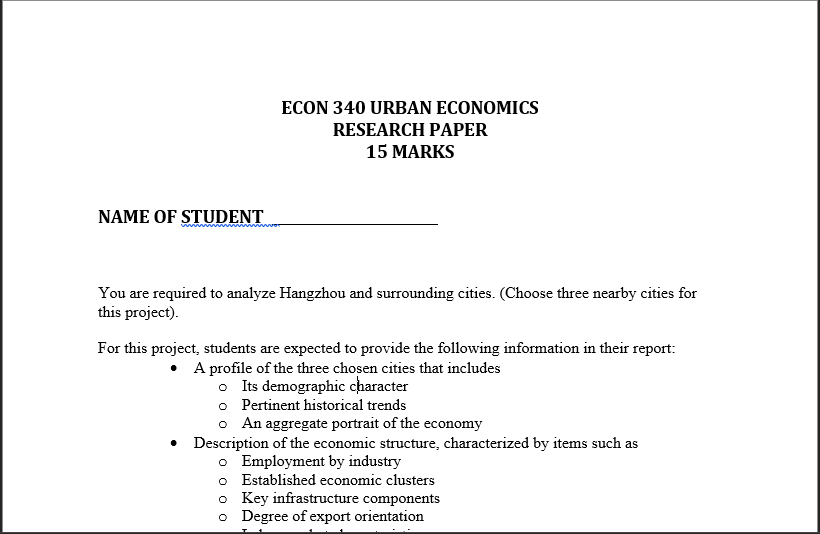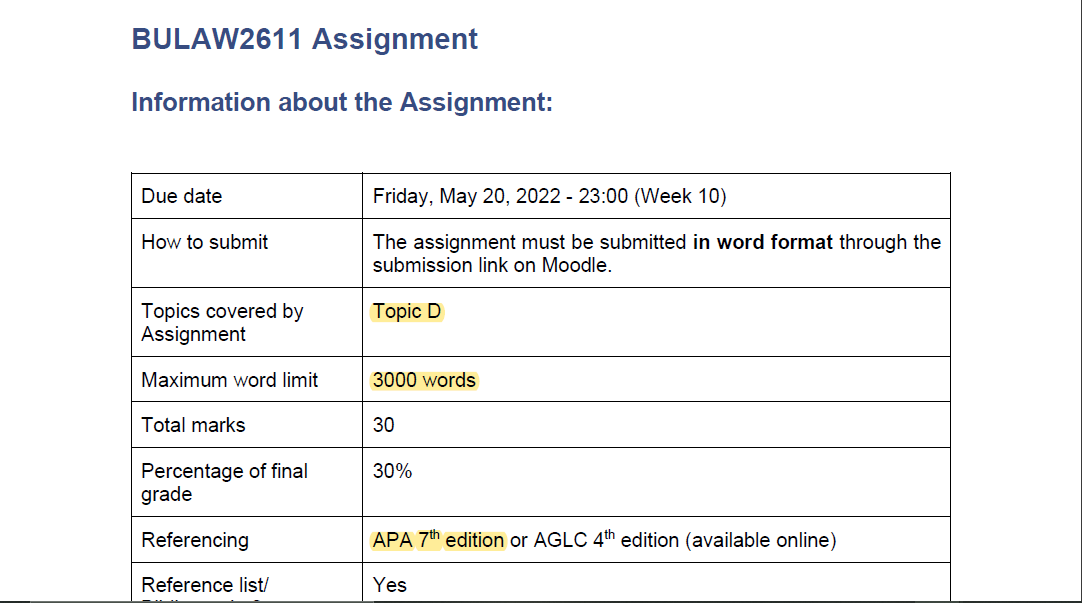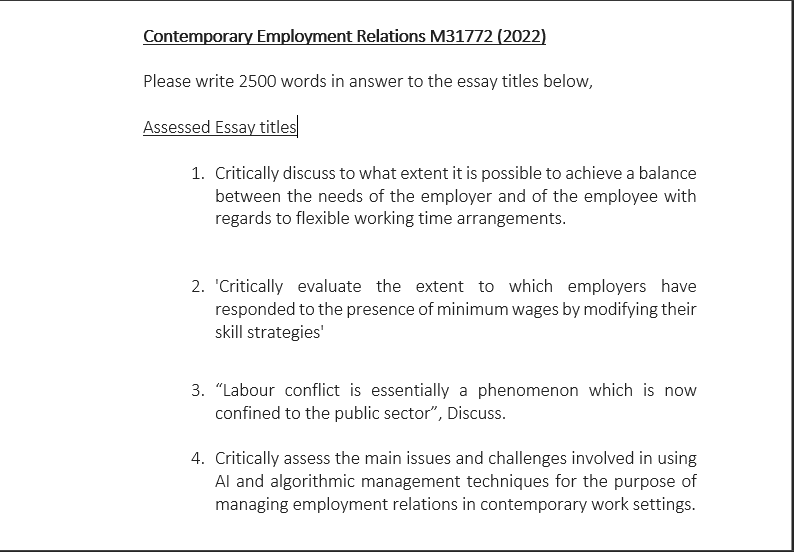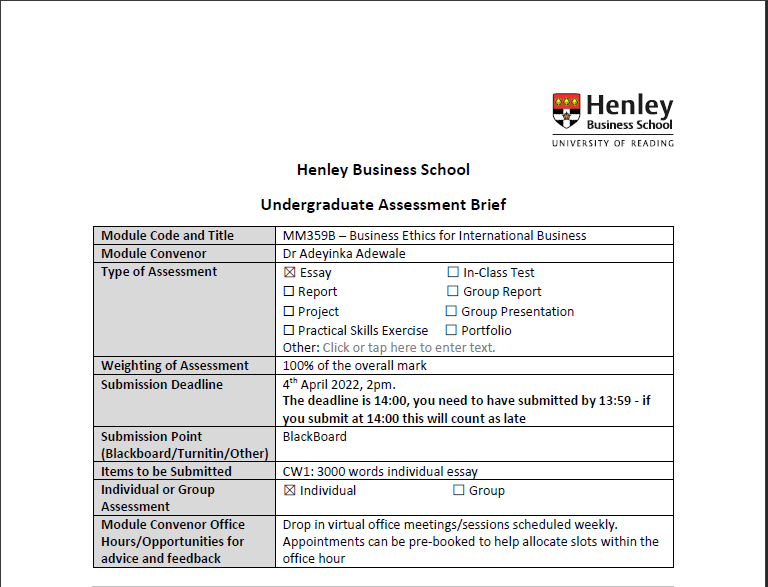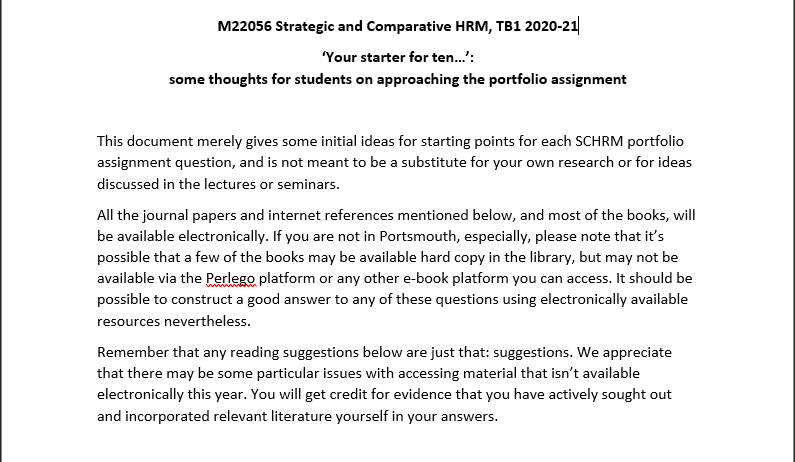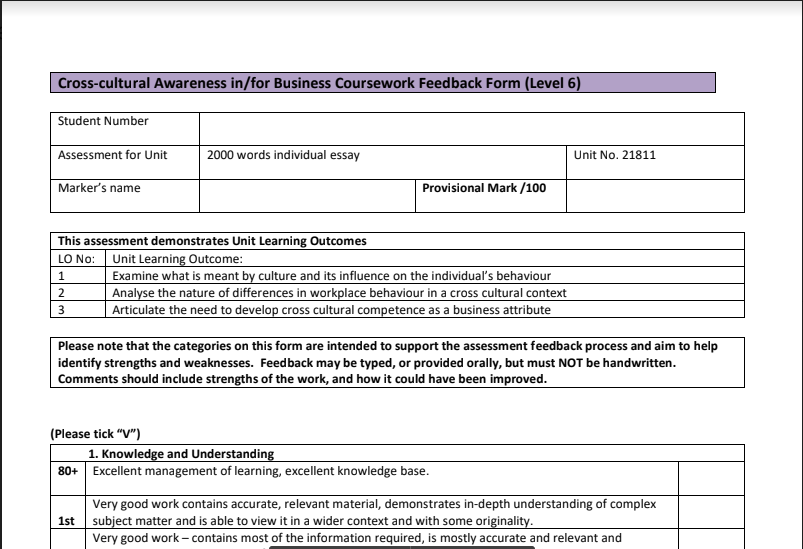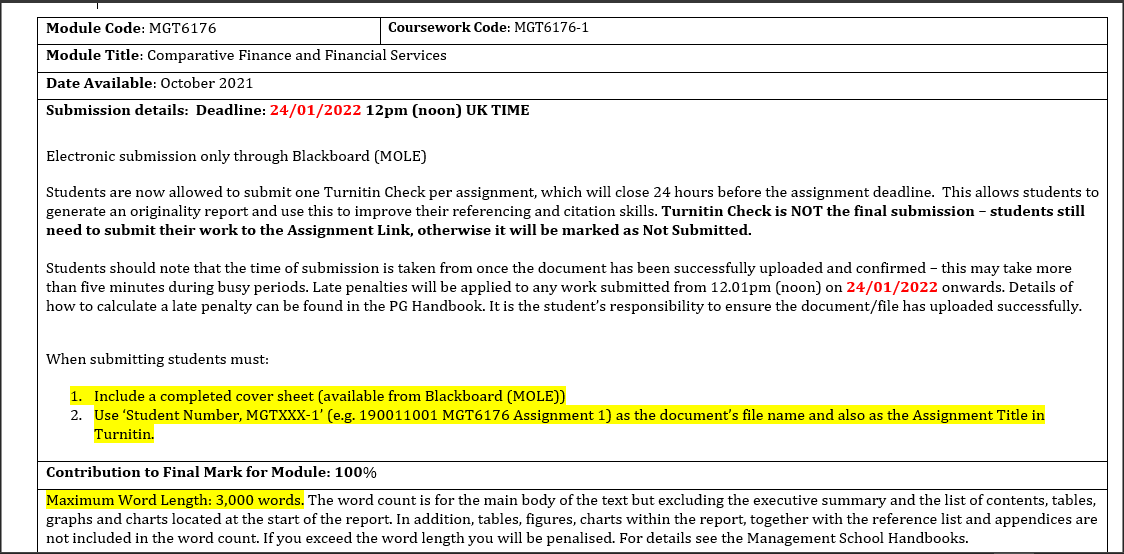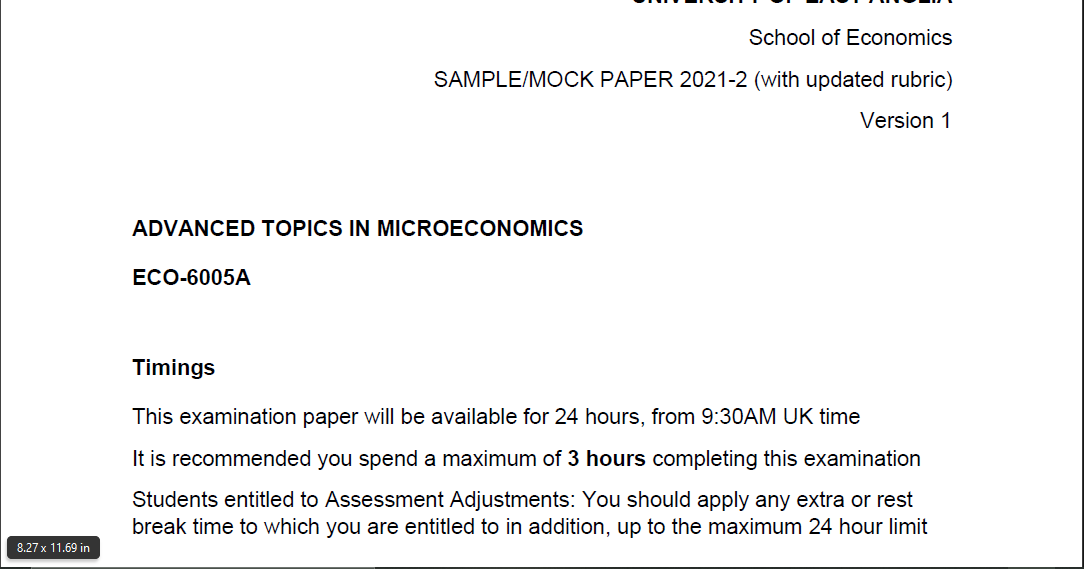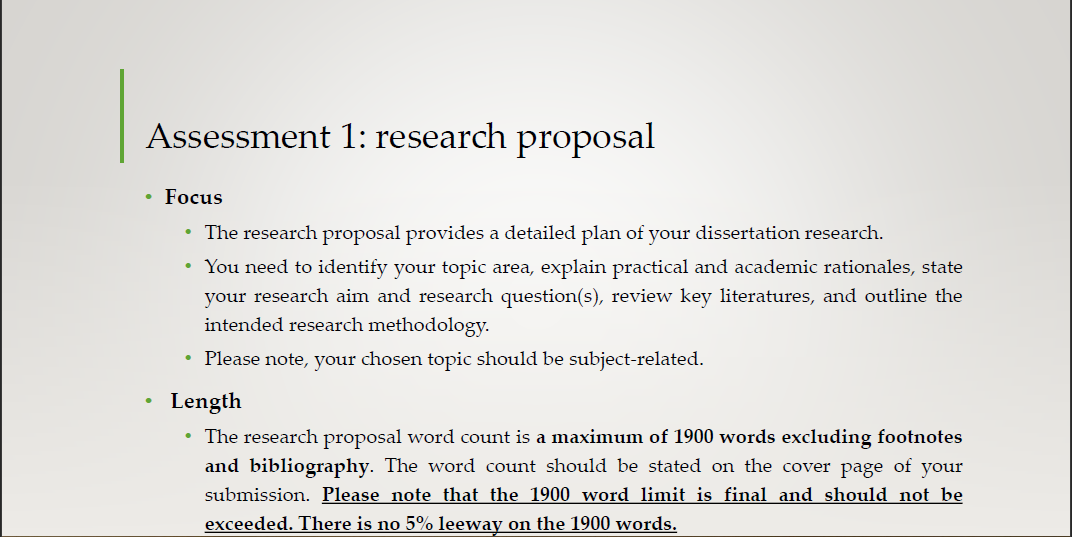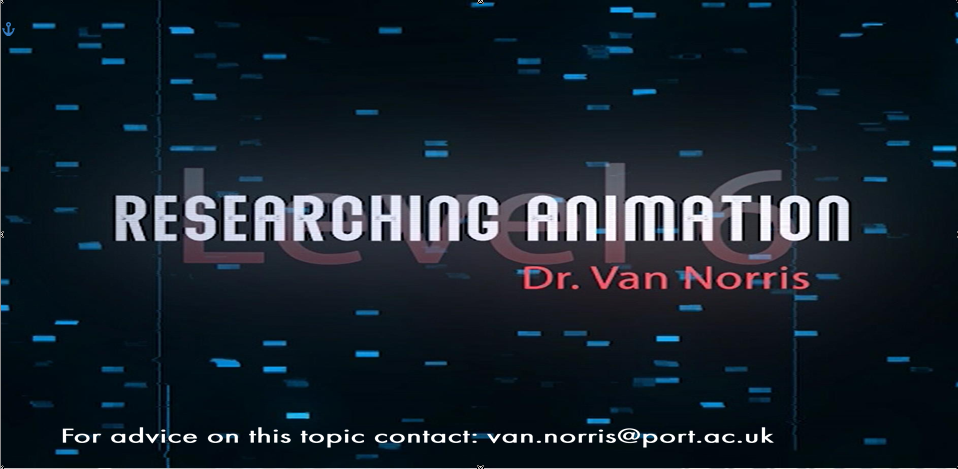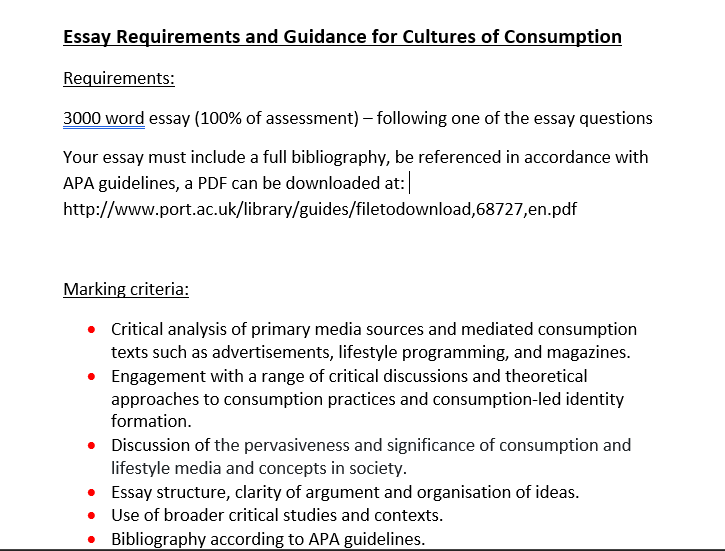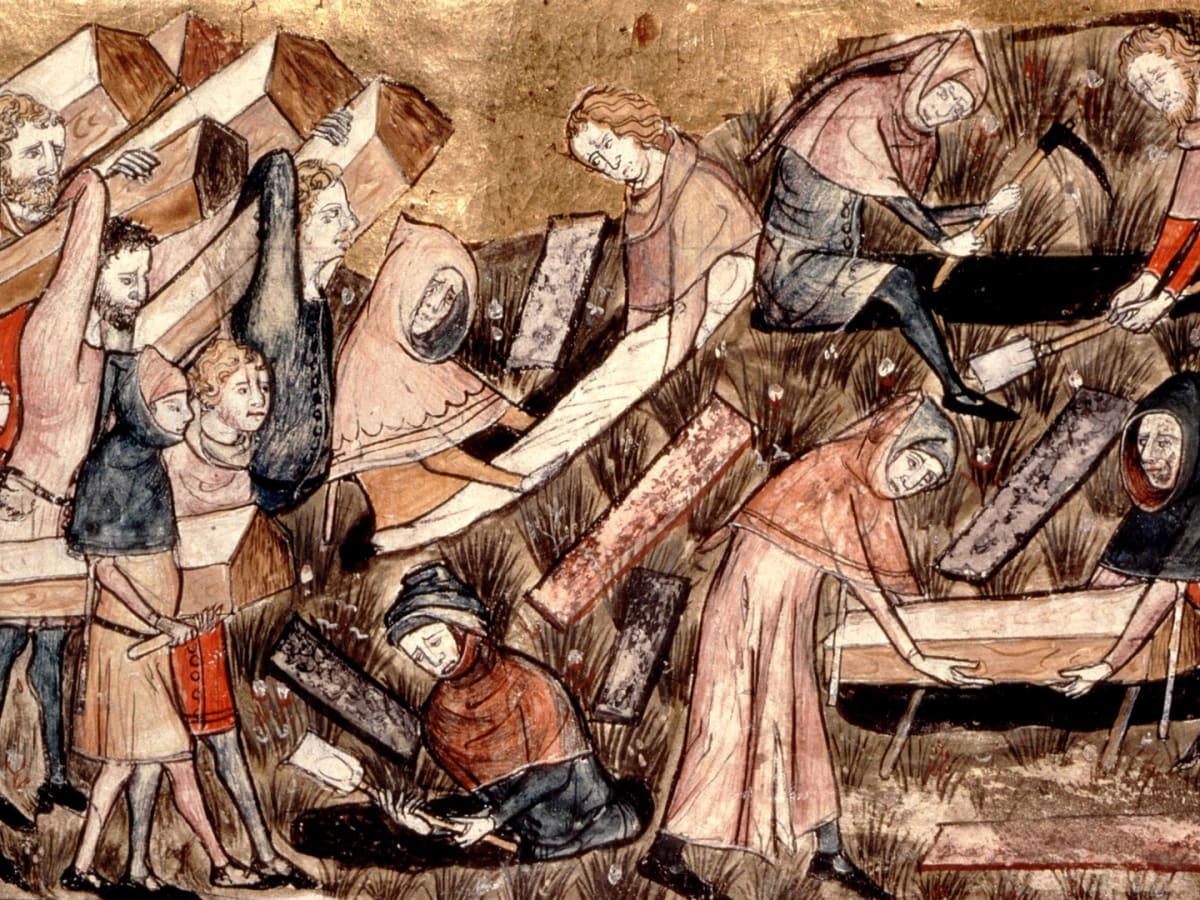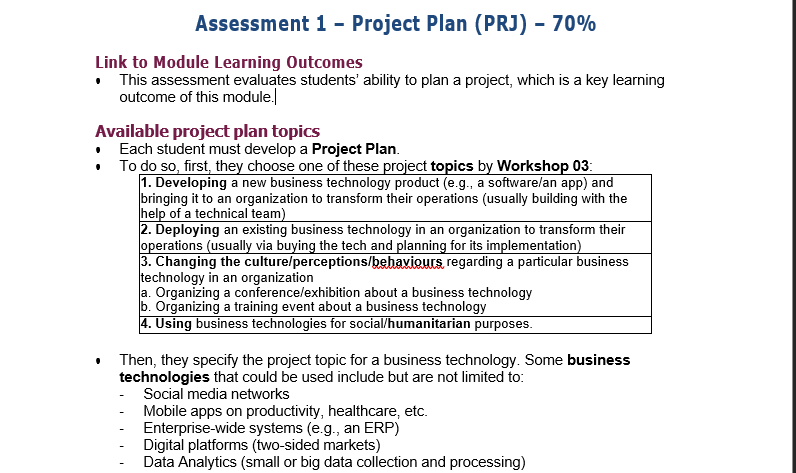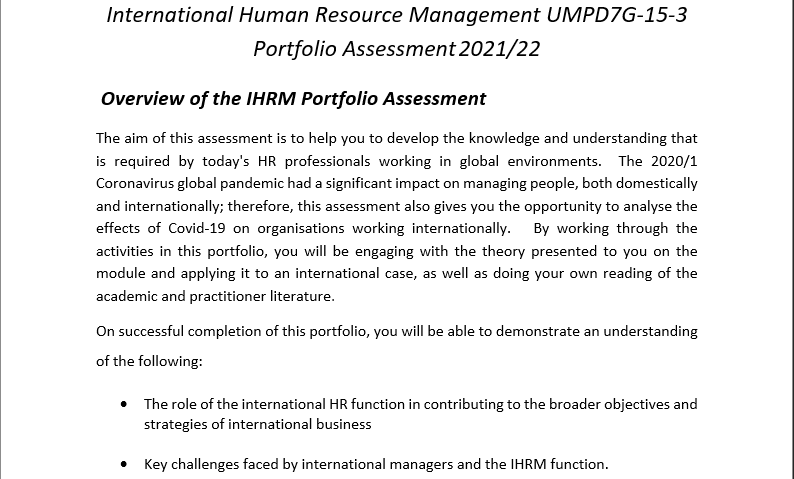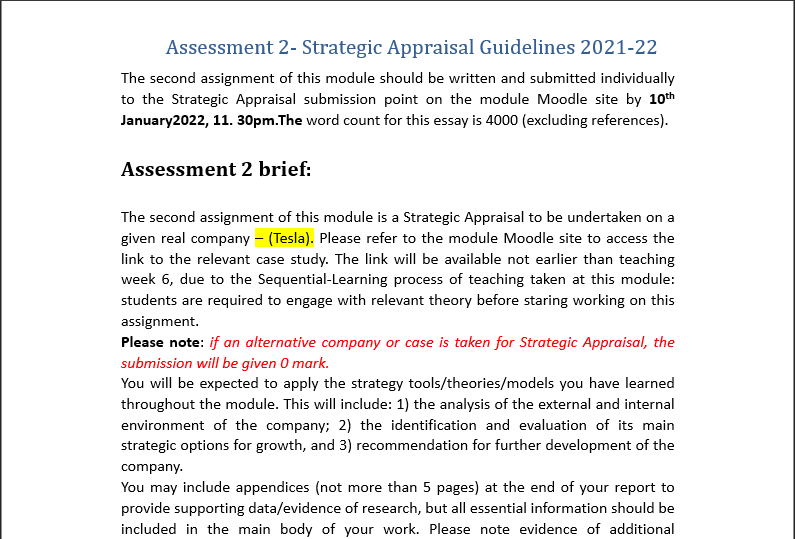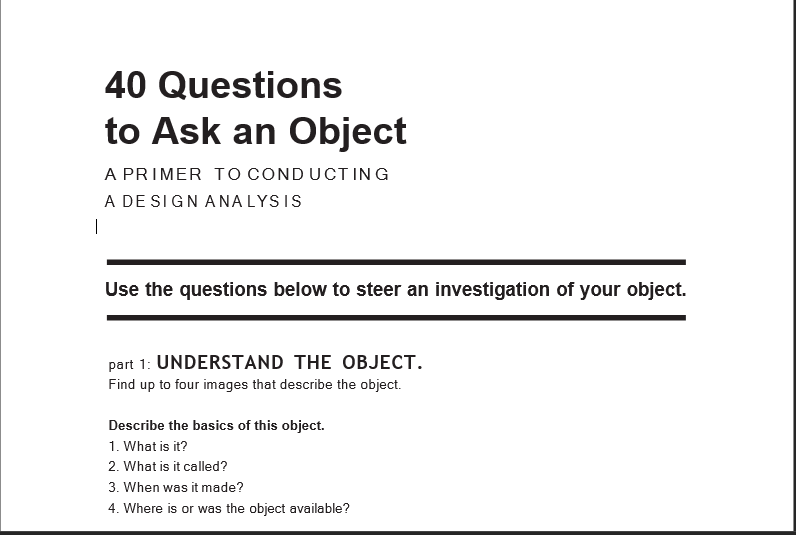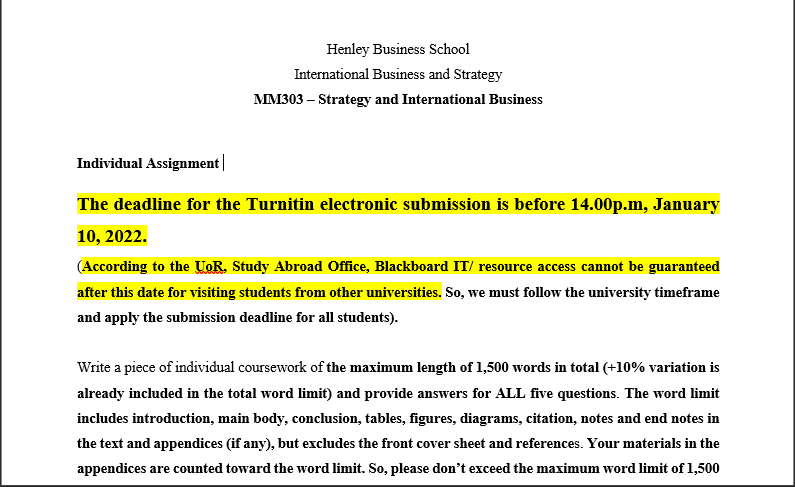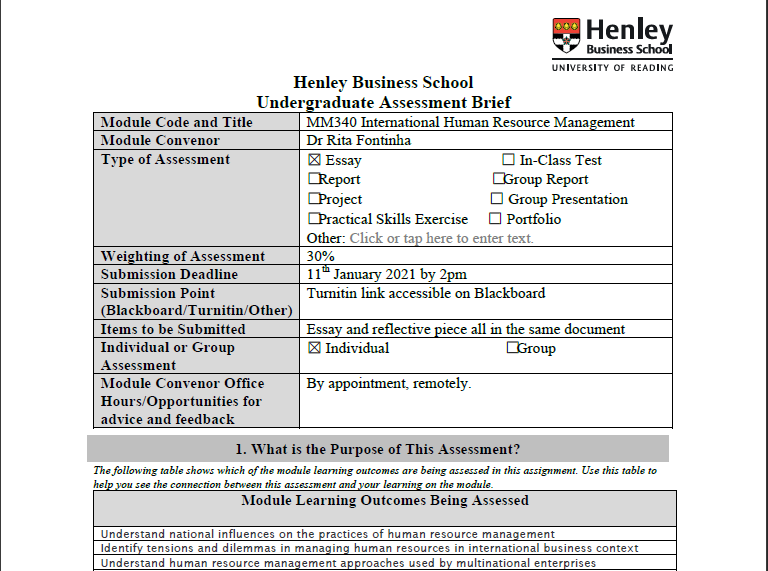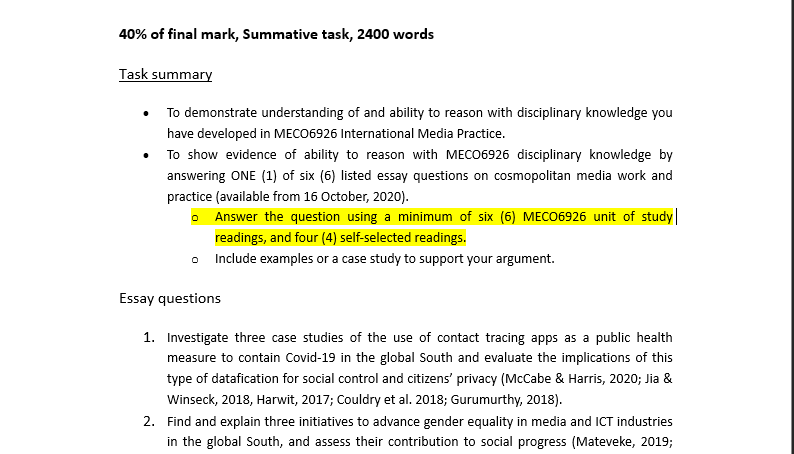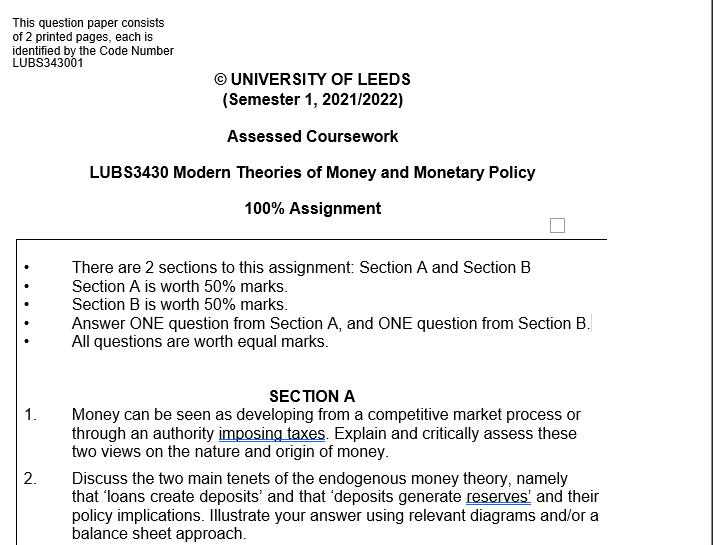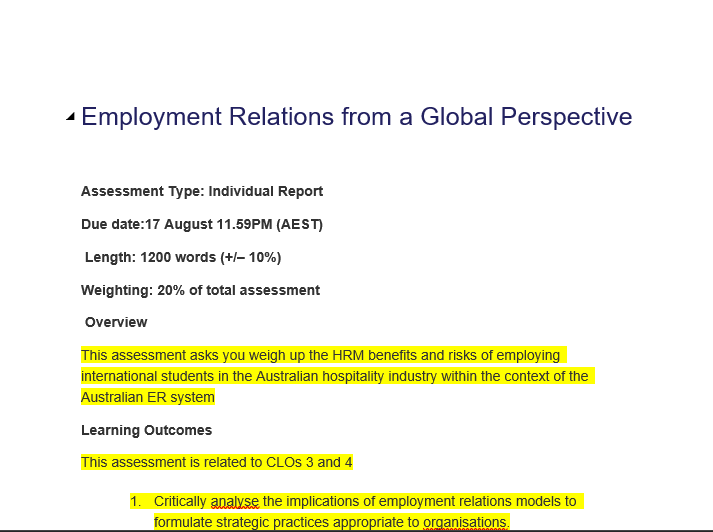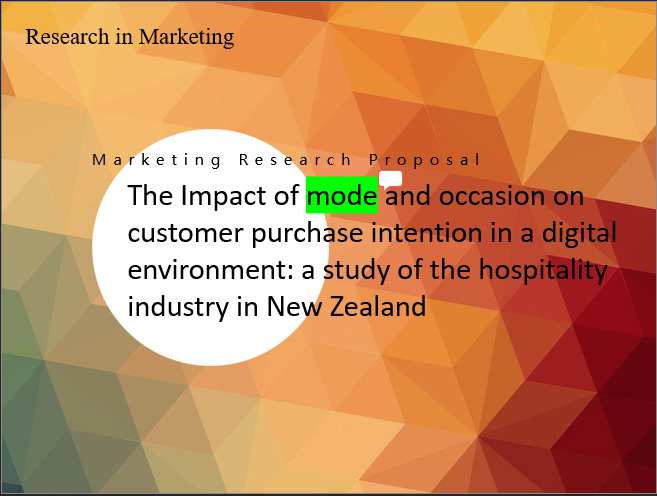Instructions and information applying to coursework assessment 2 specifically: the critical essay
This is an individual assignment and carries 75% of the module mark. It covers the following learning outcomes for the module:
- Critically evaluate theoretical and conceptual perspectives of equality and diversity.
- Apply knowledge and understanding of equality and diversity issues in the workplace.
You should prepare an essay (3000 word maximum) that answers ONE of the following eight questions. Your essay should cover the main theoretical positions relevant to the issue, include a wide range of correctly referenced academic research and policy evidence relevant to the argument you are putting forward, and provide a reasoned, well-argued conclusion that sums up your answer to the question as set. As befits work of a Level 6 standard, we are looking for well evidenced critique and not poorly substantiated assertion. Popular sources from internet sites and ‘opinion’ statements are not what is required and will be penalised. You are advised to write using correct, precise terminology to maximise the ‘professional impact’ and persuasiveness of your writing.
Additional essay guidance for assignment 2 is available below, and you should also look at an accompanying video of essay guidance presented by Sam Parsley, which you can find in the ‘Assessments and support materials’ section of the Moodle site. Specific ideas on particular essay titles are likely to be posted on the module Moodle site, in the ‘Assessments and support materials’ section. If there are still any further questions after this, please ask a tutor.
Bibliography is not included in the word count, but in-text citations are. There is no
10% margin on length – please state your word count clearly on your assignment.
For electronic submission of this assignment, you will be asked to first join a particular group, depending on the question title you’ve answered, before you can actually submit your essay. Please allow a bit of extra time for this step. More information about this will be given on the assignment submission section of the module Moodle site.
Assignment Two essay questions – choose any one of the questions below
- Critically assess the proposition that progress in reducing disadvantage at work is best achieved by recognising the importance of, and using, an intersectional approach.
- To what extent, and in what ways, is ‘modern slavery’ a source of employment disadvantage? Critically assess government and corporate efforts aimed at tackling the problem of modern slavery.
- Despite decades of equality legislation, gender inequality still exists in contemporary workplaces. Using examples of gendered disadvantage in the workplace, critically assess why this is so, with reference to at least two theoretical perspectives on gender discrimination.
- Evaluate the extent to which diversity training is an effective way of reducing inequality in the workplace.
- Critically assess the main strengths and weaknesses of efforts by employers to promote the inclusion of LGBTQ+ staff.
- How far do you agree with the view that positive action and positive discrimination are legitimate and effective methods for tackling inequality and disadvantage in work settings? Your answer must cover at least two areas of disadvantage.
- To what extent is it achievable to create racial equality and inclusion in career progression in organizations? Critically discuss ways in which organizations might succeed in creating racial equality and inclusion in their career progression systems.
- Critically discuss the ethics of making employment decisions based on the appearance of individuals. Discuss the implications of doing so for both employees (or candidates) and organizations.
 |
Deadline: Tues 24th May 2022, by 23:55 UK local time (British Summer Time for assignment 2)
10 working days after this date taking into account the two UK bank holidays on 2nd and 3rd June (deadline for late submission) is Thur 9th June by 23:55 UK local time (British Summer Time for assignment 2).
20 working days after this date (target for return of marks and feedback for assignments submitted within original deadline) is Thurs June 23rd. Please note that, as this is the University’s peak marking period, if we anticipate any delay to this you will be kept informed.
 |
Further guidance on the essay brief (from Sam Parsley)
So now let’s look at that essay brief again, important things highlighted in red, numbered and further explained below:
‘You should prepare an essay (3000 word maximumi) that answers ONE of the following eight questions (see below). Your essay should cover the main theoretical positions relevant to the issue1, include a wide range of correctly referenced academic research2 and policy evidence3 relevant to the argument you are putting forward, and provide a reasoned, well argued conclusion4 that sums up your answer to the question as set5. As befits work of a Level 6 standard, we are looking for well evidenced critique6 and not poorly substantiated assertion7. Popular sources from Internet sites8 and ‘opinion’ statements9 are not what is required and will be penalised. You are advised to write using correct, precise terminology10 to maximise the ‘professional impact’ and persuasiveness of your writing.’
Guidance on the numbered, red sections above:
- Your essay should include theory. This includes ‘broad’ theories of equality of diversity and more specific theories relevant to your chosen question.
- Broad theories include (but are not limited to) – e.g., social justice vs. business case; equality of input vs. equality of output; long and short diversity agendas; intersectionality and so on. Your essay should identify which of these positions you are aligning yourself with. You will find literature on these topics in your core textbook’s early chapters (Kirton and Greene) and any other textbook on equality and diversity. See also the early lectures of the unit.
- More specific theories: I won’t list here as there would be too many, but one example related to lookism might be ‘aesthetic labour’. You will find
these kinds of theories discussed in all the journal articles you will be reading to gather evidence for your argument, and of course in the lecture slides and materials for the topic.
The important point to note here is that you should not just include statistics, government reports, case examples and so on – you should discuss the ideas and theories that try to explain why these things have occurred and continue to occur.
- A wide range of academic research ideally means that you read at least two or three articles on each point you want to make – or at very least don’t draw all the evidence for your point from one source. The reason we insist on this is that otherwise you are just paraphrasing another person’s viewpoint and that means you will struggle to develop a critical take on what you are discussing. For a good 2:1 grade, we would expect to see a minimum of around 1.5 - 2 pages of references for a 3000 word essay. Good quality articles are those published in academic, peer reviewed publications – there are some listed in the unit handbook, others have been referenced during lectures and seminars and generally you’ll be fine with anything you find through the library databases (e.g., Ebsco, Business Source Complete, Scopus etc.) and where you have selected ‘academic articles’ and/or ‘peer reviewed publications’ from the advanced search box. That said, do pay attention to where and when the piece was published – if it was in The Journal of Icelandic Mountain Managers in 1986 it may not be the most applicable evidence for a point you are making about inequality in UK/ Europe in 2019.
You should know what correctly referenced means by now, but common errors include not stating page numbers in text for direct quotations, and including the search engine in the full reference at the end of the essay – this is not necessary for a published article or book (even if you read parts of the book on Google Books) – just reference the piece as if you had it in your hand in hard copy.
- Policy evidence is also important to show what is happening ‘on the ground’ so to speak. Policy can be formed by government (e.g. law, and ACAS guidance), pressure groups – e.g., best practice documents on Stonewall (LGBTQ rights organization) or by employers/ industry groups such as the CIPD.
- What we mean by a reasoned, well argued conclusion is that you need to do more than just explain about all the issues relating to the topic and then sum them up at the end. You need to decide on what your answer to the question is going to be (also see point 5 below) and then set about developing an argument that leads to that end point. Imagine you are having a conversation with someone and you are trying to convince them that your answer is the best one. What reasons would you give for your points? How would you come back on any counter-arguments they put forward?
This does not mean you only put forward one perspective, or ignore other positions that say something different to your argument. The best way to convince someone you are right is to ‘shoot down’ their objections and counter- arguments along the way. In an essay that means recognising that alternative positions to yours exist, but then explaining why they can be disregarded, are not relevant, can be overcome, etc. and therefore your argument is still valid.
- Make sure you answer the question as it has been set, don’t ‘go off on one’ writing about what you would prefer to write about, rather than sticking to what the question is asking you to do. Make sure you understand exactly what the question is asking you to do – come and talk to one of us if you’re not sure – please!
- By Level 6 you should be very used to using evidence for your critical points. You should not make statements without providing a reason why they are valid and then supporting that reason with some evidence why the reader should believe you. So, the statement I just wrote should really read something like:
You should not make statements without providing reasons why they are valid, because otherwise the statement is really just your own view on something, and why should your view be convincing or authoritative?
Providing good reasons is a vital step in turning an ‘opinion’ into an argument, according to Collins (2015) and the final stage in the process is providing evidence so the reader can see for themselves, ‘…that this is not just your opinion, but is a view that is supported by others’ published research and statistics’ (Agriwal 2009: 56.)
- Poorly substantiated assertion is the opposite of well reasoned critique and evidence. It just means that you have stated something with little or no evidence and so it reads as just you asserting your opinion.
- The internet is an amazing source of, and access point for, information. However, you need to be discerning about what you use. Popular internet sites that are generalist business or study sites, consultancy websites, the first thing that came up when you googled for a term, etc. are not usually good sources of information because they are not necessarily persuasive or authoritative. Sites like netMBA, businessballs.com, and so on are lazy places to find (often incorrect or over simplified) information. You pay a lot of money for your degree so use the library databases to find academic articles!
- By opinion statements we just mean statements that start ‘I think that…’ or ‘In my opinion…’. Please see points 6 and 7 above to remind yourself why opinion is
not appropriate. BUT yes, we do want your views on the topic! Remember that your ‘opinion’, when stated along with reasons why it is valid, and supported by evidence for those reasons is no longer your opinion, but your position on a topic (see point 6 above!).
- Please do not write in over-casual, ‘common sense’ language. Use the correct terms and precise words for the issues you are describing so that we a) can understand what you mean and b) can see that you understand what you mean. Every field has its own language so that it can adequately and precisely describe its elements. If you don’t use the right words, then you can’t show us that you really understand the details of your topic – and that is what is needed for the higher mark bands.
Indicative assessment criteria for assignment 2
|
|
80% + |
1st class (70-79) |
2:1 (60-69) |
2:2 (50-59) |
3rd (40-49) |
Borderline fail
(35-39) |
Clear fail
(35 or less) |
|
Application |
Comprehensive synthesis of theoretical arguments with practical/ policy implications for a range of stakeholders |
Excellent explanation of practical/ policy implications for a range of stakeholders |
Practical/ policy implications clearly and appropriately discussed. May focus on limited range of stakeholders |
Adequate recognition of practical/ policy implications of material discussed. Likely to be limited in scope |
Some recognition of practical/ policy implications but may be some misunderstanding and limited in scope |
Very limited or ‘common sense’ statement of practical/ policy implications |
No practical/ policy implications mentioned |
|
Use of theory |
Sophisticated and thought provoking theoretical underpinning for arguments coherently |
Insightful use of theory to underpin arguments coherently |
Good to very good, solid use of appropriate theory, logically applied |
Solid use of theory, may be less well integrated into argument in places |
Theory mentioned but in a disconnected manner |
Very limited or superficial mention of theory |
No theoretical material included |
|
Range of |
Skilful use of excellent |
Skilful use of |
Good to very |
Some use of |
Limited theory and |
Very little/ no |
Little or no |
|
sources |
range of theory and |
excellent range of |
good range of |
theory and/or |
research used to |
evidence used to |
evidence apparent |
|
|
research from |
theory and research |
academic theory |
research to |
support points, |
support points |
|
|
|
appropriate academic |
mostly drawn from |
and research |
support most |
and/or drawn from |
|
|
|
|
journal articles to |
academic journal |
used to support |
points. Tending |
exclusively non- |
|
|
|
|
support all major |
articles to support all |
majority of major |
toward text-book |
academic ‘popular’ |
|
|
|
|
points. Likely to include |
major points. Likely |
points. At top end, |
and non- |
sources |
|
|
|
|
significant independent |
to include a fair |
will include some |
academic |
|
|
|
|
|
research |
degree of |
independent |
‘popular’ sources |
|
|
|
|
|
|
independent |
research |
|
|
|
|
|
|
|
research |
|
|
|
|
|

